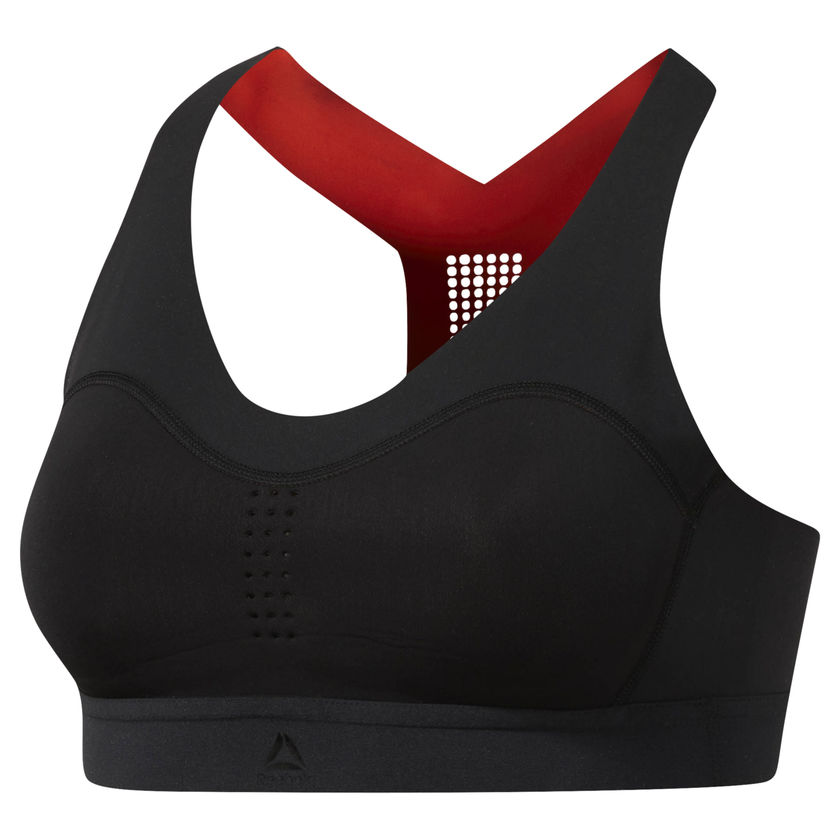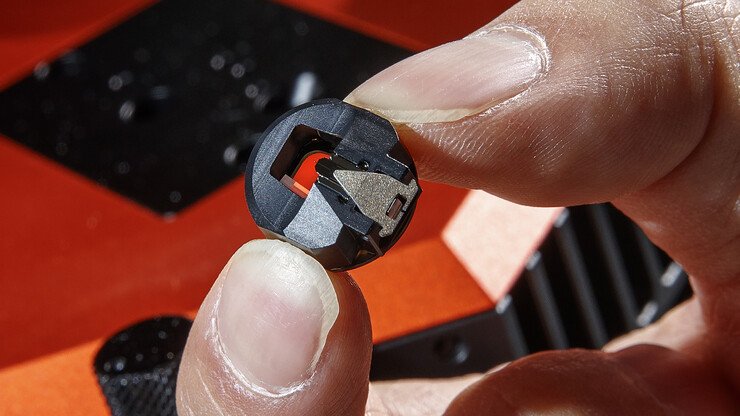I have taken a liberty in the title for this piece, strictly speaking the non-Newtonian goo in the bra isn’t the stuff (ooblek) made of cornstarch and water from your childhood science experiments but it has many of the same qualities. The material in the Reebok bra, PureMove, is called Shear Thickening Fluid and was developed at the University of Delaware in 2005 and subsequently employed by NASA (US National Aeronautics and Space Administration) for use in the suits used by astronauts as noted in an August 6, 2018 article by Elizabeth Secgran for Fast Company who explains how it came be used for the latest sports bra,
While the activewear industry floods the market with hundreds of different sports bras every season, research shows that most female consumers are unsatisfied with their sports bra options, and 1 in 5 women avoid exercise altogether because they don’t have a sports bra that fits them properly.
Reebok wants to make that experience a thing of the past. Today, it launches a new bra, the PureMove, that adapts to your movements, tightening up when you’re moving fast and relaxing when you’re not. …
…
When I visited Reebok’s Boston headquarters, Witek [Danielle Witek, Reebok designer who spearheaded the R&D making the bra possible] handed me a jar of the fluid with a stick in it. When I moved the stick quickly, it seemed to turn into a solid, and when I moved it slowly, it had the texture of honey. Witek and the scientists have incorporated this fluid into a fabric that Reebok dubs “Motion Sense Technology.” The fluid is woven into the textile, so that on the surface, it looks and feels like the synthetic material you might find in any sports bra. But what you can’t see is that the fabric adapts to the body’s shape, the velocity of the breast tissue in motion, and the type and force of movement. It stretches less with high-impact movements and then stretches more during rest and lower intensity activities.
I tested an early version of the PureMove bra a few months ago, before it had even gone into production. I did a high-intensity workout that involved doing jumping jacks and sprints, followed by a cool-down session. The best thing about the bra was that I didn’t notice it at all. I didn’t feel stifled when I was just strolling around the gym, and I didn’t feel like I was unsupported when I was running around. Ultimately, the best bras are the ones that you don’t have to think about so you can focus on getting on with your life.
Since this technology is so new, Reebok had to do a lot of testing to make sure the bra would actually do what it advertised. The company set up a breast biomechanics testing center with the help of the University of Delaware, with 54 separate motion sensors tracking and measuring various parts of a tester’s chest area. This is a far more rigorous approach than most testing facilities in the industry that typically only use between two to four sensors. Over the course of a year, the facility gathered the data required for the scientists and Reebok product designers to develop the PureMove bra.
…
… If it’s well-received, the logical next step would be to incorporate the Motion Sense Technology into other products, like running tights or swimsuits, since transitioning between compression and looseness is something that we want in all of our sportswear. ..
According to the Reebok PureMove bra webpage, it was available from August 16, 2018,
Credit: Reebok
It’s $60 (I imagine those are US dollars).
For anyone interested in the science of non-Newtonian goo, shear thickening fluid, and NASA, there’s a November 24, 2015 article by Lydia Chain for Popular Science (Note: Links have been removed),
There’s an experiment you may have done in high school: When you mix cornstarch with water—a concoction colloquially called oobleck—and give it a stir, it acts like a liquid. But scrape it quickly or hit it hard, and it stiffens up into a solid. If you set the right pace, you can even run on top of a pool of the stuff. This phenomenon is called shear force thickening, and scientists have been trying to understand how it happens for decades.
…
There are two main theories, and figuring out which is right could affect the way we make things like cement, body armor, concussion preventing helmets, and even spacesuits.
The prevailing theory is that it’s all about the fluid dynamics (the nature of how fluids move) of the liquid and the particles in a solution. As the particles are pushed closer and closer together, it becomes harder to squeeze the liquid out from between them. Eventually, it’s too hard to squeeze out any more fluid and the particles lock up into hydrodynamic clusters, still separated by a thin film of fluid. They then move together, thickening the mixture and forming a solid.
The other idea is that contact forces like friction keep the particles locked together. Under this theory, when force is applied, the particles actually touch. The shearing force and friction keep them pressed together, which makes the solution more solid.
“The debate has been raging, and we’ve been wracking our brains to think of a method to conclusively go one way or the other,” says Itai Cohen, a physicist at Cornell University. He and his team recently ran a new experiment that seems to point to friction as the driving cause of shear thickening.
…
Norman Wagner, a chemical engineer at the University of Delaware, says that research into frictional interactions like this is important, but notes that he isn’t completely convinced as Cohen’s team didn’t measure friction directly (they inferred it was friction from their modeling however they didn’t find the exact measurement of the friction between the particles). He also says that there’s a lot of data in the field already that strongly indicates hydrodynamic clusters as the cause for shear thickening.
…
…
Wagner and his team are working on a NASA funded project to improve space suits so that micrometeorites or other debris can’t puncture them. They have also bent their technology to make padding for helmets and shin guards that would do a better job protecting athletes from harmful impacts. They are even making puncture resistant gloves that would give healthcare workers the same dexterity as current ones but with extra protection against accidental needle sticks.
“It’s a very exciting area,” says Wagner. He’s very interested in designing materials that automatically protect someone, without robotics or power. …
I guess that in 2015 Wagner didn’t realize his work would also end up in a 2018 sports bra.

